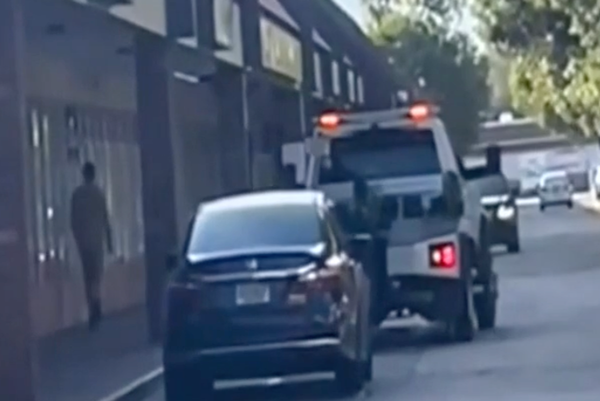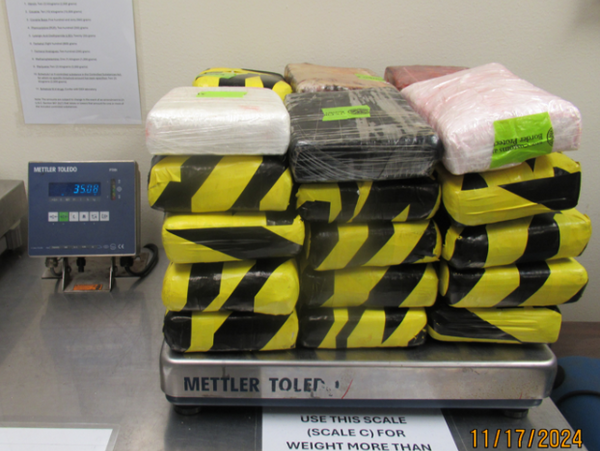
Toyota has been busy on the electric vehicle front.
Its three big announcements last week for the United States market included the updated and renamed bZ4x, the all-new C-HR and the rugged new version called the bZ Woodland. And after checking them out in person at Toyota’s North American headquarters in Texas this week, it’s clear to me that Toyota’s EV lineup has finally found its footing.
That starts with the new bZ. It may not be a disruptor, but it’s no longer mediocre. This is Toyota showing it can play ball in the hot electric crossover space.

(Full Disclosure: Toyota invited me to Plano, Texas to see its new EV offerings. The automaker covered travel and lodging.)
First, Toyota dumped the alphanumeric soup of a name and now simply calls this car the bZ, short for "beyond zero"—as in, carbon emissions.
Name aside, the 2026 bZ is better in every area that matters—range, power, features, even the overall vibes. It gets a bigger battery, upgraded tech and design tweaks that make it feel less like a rental and more like something you’d actually want to personally own and drive every day. (The First Drive review will drop at a later date, as I only got an up-close look with a stationary car.)

At least to this pair of eyes, the bZ4x’s design was well-intentioned with a bold and futuristic appeal, but it didn’t quite land. The design felt busy, with a mishmash of elements making it look overstyled. With subtle changes, Toyota has toned that down.
In person, the bZ retains that futuristic appeal but with a cleaner, less in-your-face fascia.
The full-width LED DRL housing is now separate from the actual headlamps right below. Gone is the black cladding on the fender, which gave it a fake rugged look and in comes the more natural-looking body colored fenders. The “hammerhead” front—basically the grille area—is now flatter and cleaner, which makes the design appear more confident and purposeful. It still looks futuristic, just less like it’s trying too hard. The rest of the car's design is identical.

Inside, the utilitarian vibes and clutter is now gone. The bZ gets a more upmarket and minimalist look. The larger 14-inch screen (up from 12.3 inches) dominates the cabin and houses most vehicle functions as Toyota has reduced the number of physical buttons inside. The top of the steering still obstructed the gauge cluster view in my preferred driving position—I wish Toyota paid more attention to that. This was a development vehicle so the screens weren’t switched on, so tech impressions will come at a later date, too.

But the interior feels more premium with soft-touch materials on the dashboard and door pads. The dashboard is now divided into a darker upper and a lighter lower section with the air vents hidden between them. The center console is simplified now with two big wireless charging pads and the drive selector pushed back near the armrest. The steering wheel remains identical but everything in here is a tactile upgrade, more functional and easier to access.
The bZ now gets two battery options: 57.7 kilowatt-hour pack good for 236 miles of Toyota-estimated range and the larger 74.7 kWh pack with up to 314 miles of range on the top front-wheel-drive trim. Maximum range on the AWD is 288 miles.
It also gets a Tesla-style NACS charging port from the factory and will support plug and charge on select charging networks, so it’s now a genuine road-tripper. It’s also more powerful with 338 horsepower and a 0-60 miles per hour time of around 4.9 seconds.
Of course, the new bZ still has some drawbacks. There’s still no frunk and it rides on a 400-volt architecture in an era when a growing number of EVs are moving to the 800-volt system, which facilitates faster charging speeds. And it still rides on the e-TNGA platform, which is a tweaked version of Toyota’s broader TNGA gas and hybrid car platform. So it’s not a Tesla Model Y-like software-defined car.
But again, many traditional automakers have had a hard time getting there. They’re slowly moving in that direction. And so is the consumer, who's been waiting for legit offerings from Toyota for a long time.
Gallery: 2026 Toyota bZ: First Look







Don't believe me? Keep in mind the bZ4X has sold surprisingly well despite its early flaws. And the 2026 update looks like it could finally deliver what Toyota fans have been waiting for: a real EV that fits right into their lives.
No, it won’t shake up the industry overnight. But for the millions already driving Toyota hybrids and PHEVs, this is the natural next step—and a surprisingly compelling one at that.
Have a tip? Contact the author: suvrat.kothari@insideevs.com







